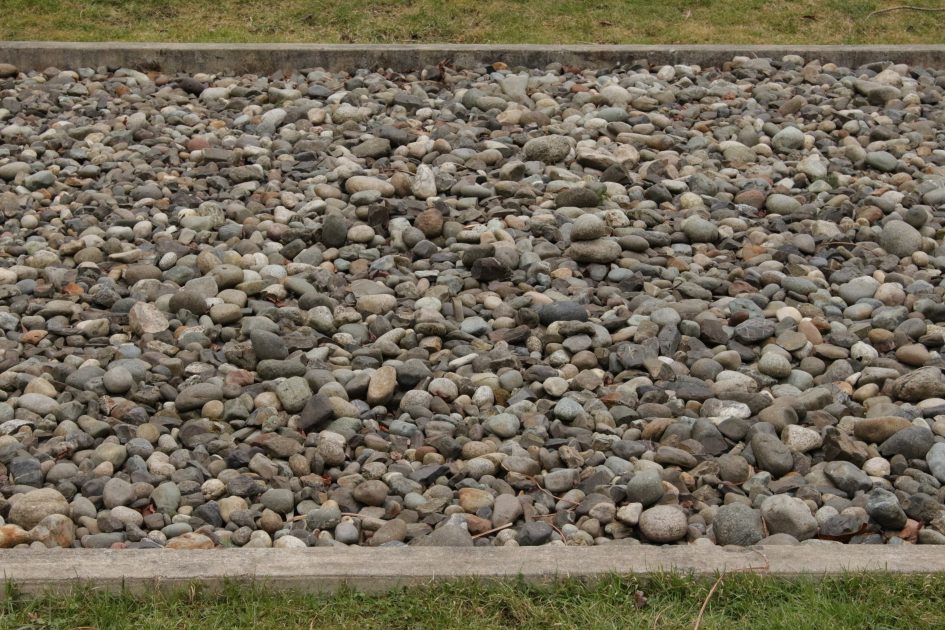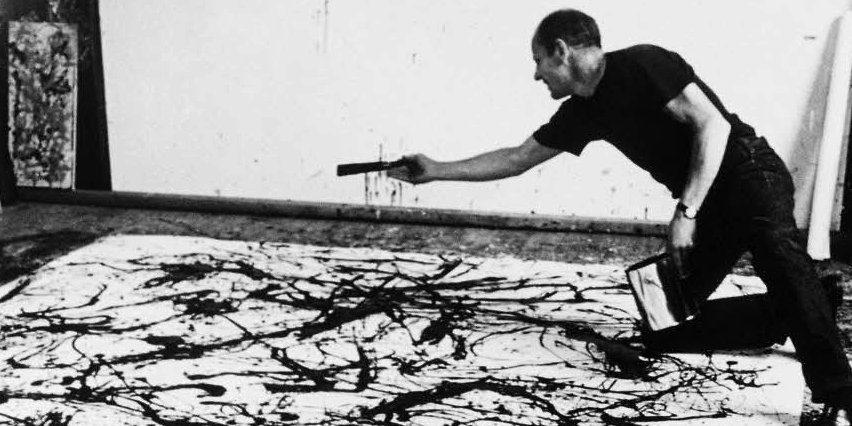Visual Response to Untitled (Steam Works for Bellingham)
The inspiration for this .gif video response came to me during my research of Robert Morris. Many of his ideas about art throughout his life surrounded the concept of interaction between three things: the viewer, the sculpture itself, and the environment. Morris seemed to believe that only through the indirect medium of sculpture or other art could he reach the audience to create something more real to him, which is the communication and interconnection between the two.
I did not want to merely photograph this piece; it wouldn’t do it justice. It would leave the sculpture mute with nothing to say about the connection of those key elements before mentioned. So I asked my assistant to help me take photos of the piece while I disturbed the rocks of the sculpture between each photograph, with the intentions of making a time lapse in which the rocks seemed to move on their own to represent the ever-changing constitution of nature. Instead when I saw the full photo reel I realized that the rocks didn’t move on their own, and couldn’t. What I had really captured was the interaction between myself and the sculpture, which was closer to Morris’ intentions after all. So I roughly compiled the photos into a .gif as I originally planned, but included the shots with myself in them. The result was a photo series brought to life. They do not exist simultaneously as a photo gallery, but lead into one another as a succession, without halt, as life tends to.
-Klara Engel
About Robert Morris
“Monumentality for what? What is there to monumentalize in the 20th century? At the end of this century this idea is obscene. I don’t think there is anything to monumentalize. My work has always been opposed to that kind of grandeur…”
-Robert Morris
Robert Morris is known for his sculpture, though he began his career as a painter. His work has a minimalist style, though he was also influenced by the Dada and Abstract Expressionism movements. We can understand that, as well as some of the intention behind Untitled (Steam Work for Bellingham) through his quote, “Simplicity of form is not necessarily the simplicity of experience.” He was influenced by Jackson Pollock early on, a focus as one of his subjects. Another of his major influences was Marcel Duchamp.
In general, Morris was an incredibly versatile artist; though he was most popular for his sculpture work, he also explored performance art with a flair for dance and choreography, land art, writing, photography, video media, and design. He created an impressively functional sculpture dubbed a “modern stonehenge,” which was named the Robert Morris Observatory; it can identify solstices and equinoxes. To experience it visually however really can change your perspective about what may seem ridiculously simplified, just as with Untitled (Steam Works for Bellingham). Morris’ other key works are all seemingly centered around the same thematic ideas: Simplicity of form, and the use of geometry to encourage the viewer to consider their personal perspective relative to the sculpture. Even his most detailed of paintings, take for example Homage to Martin Johnson Heade from his series [small works] (2014), he uses elegant gradients and simplified forms creating the illusion of even a cartoon-like style amid a surreal landscape. This visually aesthetic piece shows very understated constructive elements, yet still leaves an impact.
We know his pieces seek to interact with the audience, especially through his works like Untitled, (1965) which features mirrored boxes which encourage the viewer to literally self-reflect. His writings in Continuous Product Altered Daily (1994) reinforces ideas about antiform art and the unity between the interpreter and an art piece. Through the title of this collection one can gather his intentions about works in progress, to which he dedicates a whole chapter. He believes that through interaction with the audience and the environment, artwork can be forever progressing and building. This can be seen in his Steam works sculpture in the way that the action of the steam interacts with the environment, the viewer, and the sculpture itself.
A majority of Morris’ art was created in the 1960s. This is when he began his many sculpture pieces of massive, geometric form. Untitled (Steam Work for Bellingham) was made in 1971, closely following the creation of Steam (1967) and his exhibit work with industrial pink felt (1970), which were very characteristically anti-form. I instantly recognized Steam as very similar to the piece we are studying, and though I find the two practically indistinguishable I also must say based on my past research that they are completely different due to their inhabiting of unique environments. That is the true nature of land art. They may stand for the same things, but at different times and never in exactly the same way.
Reactions to Untitled (Steam Works for Bellingham)
Robert Morris’ work was definitely unexpected when I first observed it. My gut reaction was, “That’s it?” I felt like the artist may have left me in the dark (especially by leaving the piece untitled) which isn’t always a nice feeling. When people see something, they naturally want to understand it right away so they can be “in on the joke,” so to speak, without exerting our brains too much. This rule is all-encompassing and it seems the art world thrives off of it. Typically more ponderous art pieces of this nature leave me wanting more. I want more details, more to reference from, more answers. But the reason Morris is admirable is really for understanding is that the power of any particular art piece is not usually in the viewer being able to fully list its details, ideas, and answers to questions; but in the journey the audience takes to get there. He reserves a great deal of mystery for his art, and lets the sculptures’ actions and (more importantly) interactions speak for themselves.
I think it is the actions that Morris was really thinking of when he imagined his piece Untitled. He probably thought of what it would do, not nearly so much as how it appeared. The simple geometric nature of the piece led me to believe this, as well as the generally underwhelming medium of river stones. It made me wonder if perhaps he meant to juxtapose nature with man-made creations: round, river-smoothed stones from the earth, made to fit into an artificially constructed sandbox-type structure.
Morris valued function over form. His sculpture engages with the world to complete a specific action, yet appears quite unimpressive. However, he did not wish to impress or awe; he meant to encourage communication and connection between the viewer and the world around them. A cause which is noble in all its humility.
Through investigation and personal interpretation, eventually one can begin to understand Morris’ motives which cyclically affect one’s interpretation even more. Like his earlier work Untitled featuring mirrored boxes, the audience learns through experiencing the sculpture how movement and the viewer’s relation to the geometric shapes affect their perception. In this way Morris communicates with the audience through his work the idea that they need to move around the piece to gain perspective on it. He also invites you to manipulate the sculpture, even create your own! And though your rock sculpture will soon be reabsorbed and reconstituted into this work, so too will Morris’ Steam Works into to the earth itself. This is the beauty of Morris’ land art, and especially a humble sculpture such as Untitled (Steam Works for Bellingham).
-Klara Engel, Darienne Santos
- Ruthe, Von Ingeborg. “”Jack the Drippers” Tatorte.” Berliner Zeitung, January 28, 2012. Accessed February 18, 2017. http://www.berliner-zeitung.de/kultur/100–geburtstag-von-jackson-pollock–jack-the-drippers–tatorte-10774278. Courtesy of Sygma/Corbis/vg bildkunst 2012 ©2017.
- Morris, Robert. Homage to Martin Johnson Heade. 2014. [small works], EBK Gallery.
- Morris, Robert. Untitled, 1965, Photo: © Tate, London 2017








Leave a Reply